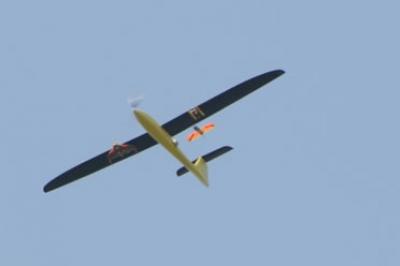The Naval Research Laboratory Vehicle Section has completed flight testing of the Close-In Covert Autonomous Disposable Aircraft (CICADA). The demonstration consisted testing of eight balloon drops at altitudes of 57,000 ft, the aircraft was able to deliver the sensors at a distance of 15 ft from the intended landing locations. The testing was conducted at the Yuma Proving Grounds, Arizona.
 CICADA Mark III UAV
CICADA Mark III UAV
The testing of the aircraft is part of the Autonomous Deployment Demonstration (ADD) program. The concept of this program is to enable balloon or precision guided launching of small unmanned air vehicles that are equipped with sensor payloads. The UAVs can be launched in patterns that are selected in designated areas. The flight test coordinator explained that as soon as the CICADA is dropped from another airborne vehicle it flies to a single waypoint and then takes up an orbit of flight. The aircraft does not have an inbuilt propulsion source, hence needs an external airborne source for launching. It does not house a motor and hence is very small in size and is capable of flying unnoticed. The balloons that were used for launching the CICADA were operated by Aerostar International. The Tempest UAV, which was built by UAS USA was armed with two CICADA vehicles that were attached on wing mounted pylons. The CICADAs were carried up to an altitude of 60,000 ft at which the Tempest was released from the balloon. The Tempest then performed a pull up manouver and carried the two CICADAs to the drop location and released them so that they reach their pre-determined landing locations.
The CICADA is unique in having a light weight airframe made of a printed circuit board that serves as an autopilot. It is also the first ever multi-purpose airframe avionics implementation which adopts a new construction method that resulted in reducing the assembly time and wiring requirements. The shape of the aircraft is such that it is able to accommodate payloads of various sizes and acoustic, chemical/biological and SIGINT sensors. By modifying the printed circuit board the aircraft can accommodate additional electronic payloads. The only flight sensors present are the 5 Hz GPS receiver and the dual-axis gyroscope.